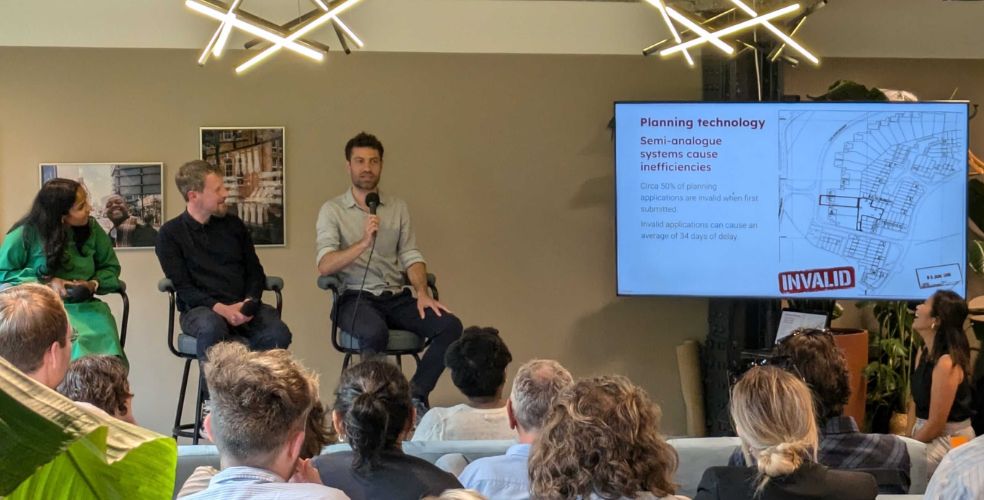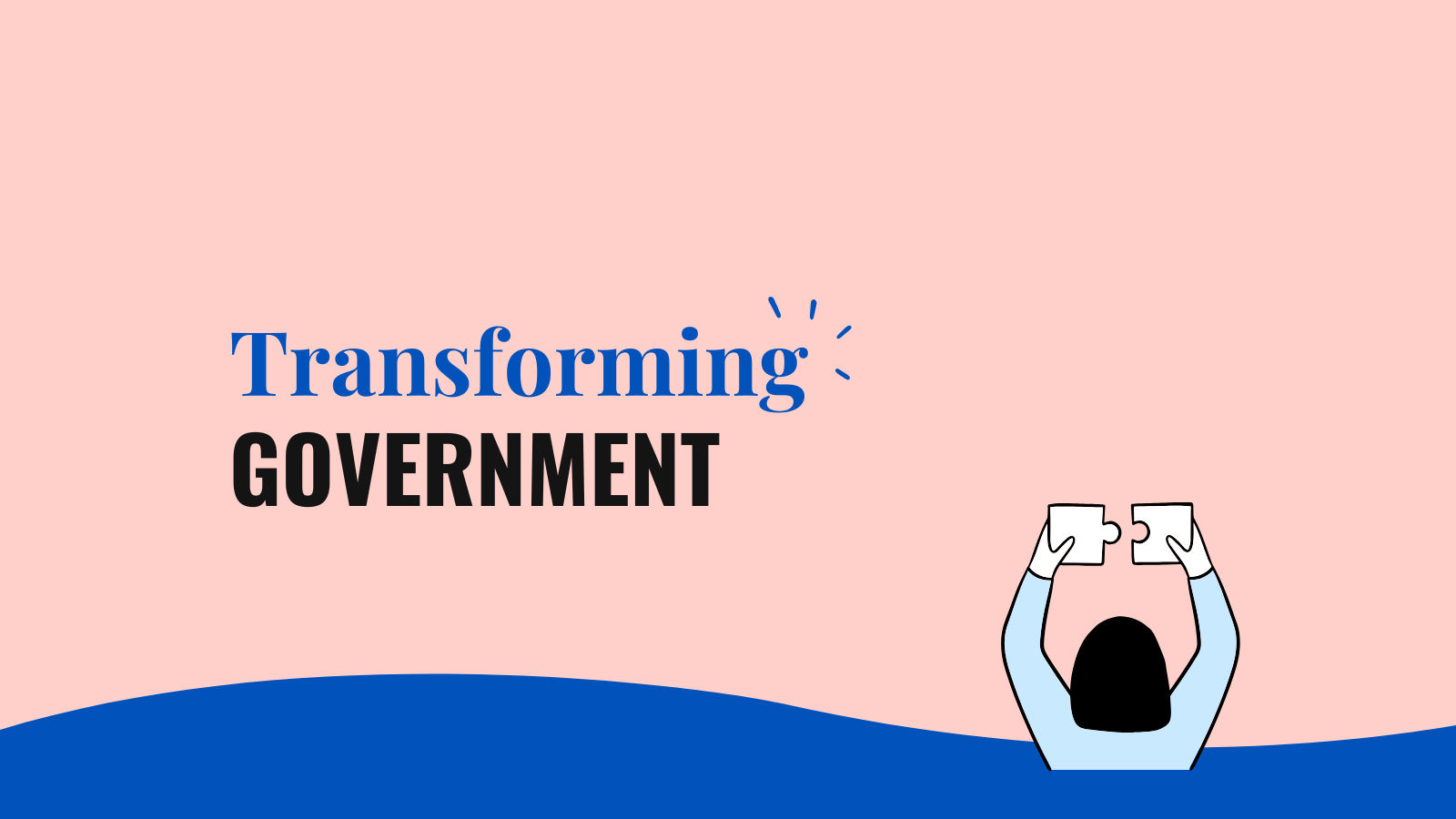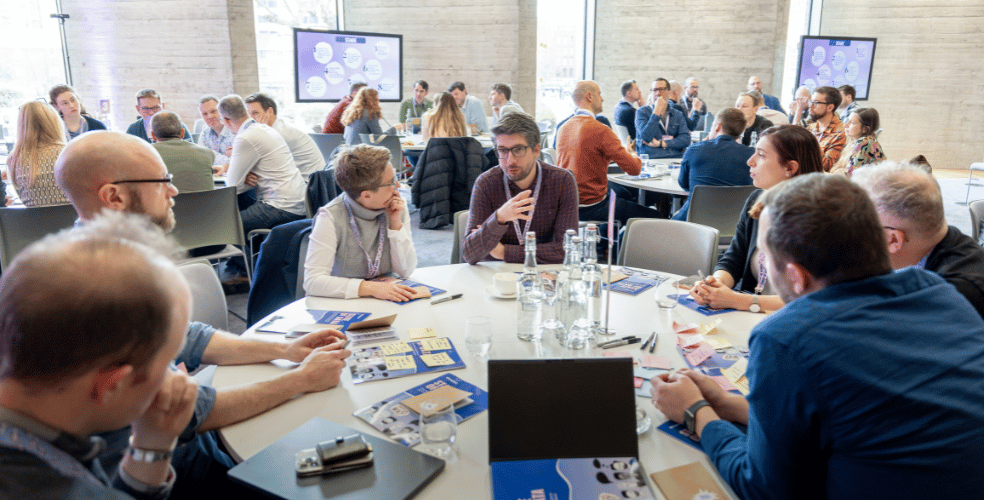I know what you’re thinking. We’ve been here before. DSIT is working on its plans for how to shape its ‘digital centre’ and hopefully all digital government. One of the perpetual problems it’ll need to address is how it works with fast-moving policy environments.
Bridging the gap between policymaking and delivery is a challenge that has long plagued the public sector, largely due to the friction between these teams. Both share the same goals but often struggle to work together effectively, resulting in opportunities to make positive impacts and deliver excellent public services being missed. This is why we advise our clients to think about how to design policy and change as part of a wider system - not just digital services.
Universal Credit rollout, for example, faced significant delays and cost overruns because of early missteps in aligning the policy vision with delivery, including unrealistic timelines and a failure to account for the complexity of integrating IT systems and user needs. Similarly, a former public servant I greatly admired when he led me at DfE - Jonathan Slater’s report on Fixing Whitehall’s Broken Policy Machine describes how policymaking often overlooks the realities of delivery. He believes, as we do at TPXimpact, that this is due to those making the decisions often being disconnected from the realities on the ground, limiting their ability to craft policies that are practical and deliverable.
Sometimes, bridging this divide can feel pretty far off, like we’re firing arrows (or a kite) and hoping that someone will catch them on the other side and begin to reciprocate. It seems there are many people who feel this way, and I recently had the pleasure of taking part in a virtual event on this crucial issue to discuss what we can do to address it.
A framework for understanding the issues
Alice Goldman Whitehead, Head of Digital Spend Controls at the Ministry of Housing, Communities and Local Government (MHCLG), was one of the experts speaking at the event. She shared a framework of the challenges that really resonated with all of us, breaking them down into four categories:
-
Distance - This isn’t just about geography, though teams can often be spread across multiple locations. It’s also about how far removed people are from the decisions they’re making. Leadership can sometimes be several layers away from the frontline work, or delivery teams may sit in different organisations altogether.
-
Complexity - Policy decisions involve many moving parts and can have a lot of ramifications. Simplifying them for decision-makers, though tempting, can lead to missed nuances that are critical for successful outcomes.
-
Accountability - Policy teams are often under pressure to satisfy ministers and media cycles. Delivery teams are driven by and accountable for satisfying user needs, financial deadlines, and on-the-ground results. This creates a misalignment in focus, damages working relationships and demotivates those involved.
-
Mindset - Teams across different departments, or even within the same organisation, might have contrasting ways of working, values, and collaboration styles, all of which make joint efforts harder.
We all got behind with Alice’s assessment and agreed that communication was an important piece to add to the framework. Given time and will, policy and delivery teams align on values and outcomes. But when it comes to actually actioning the work, a lack of clear communication hinders this collaboration and progress. Time constraints, geographic separation, and even structural barriers mean that opportunities for meaningful discussions that will help projects move forward and be successful are missed.
Closing the gap
With the key challenges laid out, we quickly moved on to what policy and delivery teams can practically do to address them and build the working relationships that will deliver for services and people.
Overcoming distance: Come together
It might be necessary for individuals and teams to step out of their comfort zones. It can be tempting to stick to your home office or remain at your own desk, but sometimes meeting in person is the only way to build a genuine, human connection. There’s no substitute for face-to-face interaction when it comes to building trust.
At the same time, if people are or feel detached from where decisions are made, bring them in! Policymakers should invite delivery teams into the decision-making process, allowing them to see policy development first-hand by involving them in meetings with senior leadership or even ministers. Delivery teams should also be proactive in providing useful information like user feedback, data points and context to help policymakers get a better picture of the situation on the ground to inform their decision-making.
Stop oversimplifying
When dealing with complexity, it’s important to know when to simplify and when to embrace the complexity for what it is. Differentiating between complicated and complex problems is key here. Complicated problems can be simplified by removing unnecessary elements and focusing on the system’s essential components. Being able to choose what’s important and what isn’t is a crucial decision-making skill.
However, complex issues—those with unpredictable outcomes—can’t always be reduced in the same way. These problems need to be experimented with and managed through a process of testing and learning. Don’t hide the complexity from decision-makers, but instead, explain why certain outcomes might be unpredictable and show your approach to navigating them. By presenting a clear testing framework, you can give decision-makers firm evidence on what’s working and what needs to be adjusted.
The Cynefin framework is useful for understanding this difference. It can help policy and decision teams discern between problems that can be simplified and those that require more adaptive, iterative solutions.
Celebrate wins together
When it comes to accountability, creating shared successes is a great way to align both policy and delivery teams. Small wins and recognition for collaboration can work wonders in motivating teams. A good example of this is from DfE’s work on the apprenticeship service, where the team won the Permanent Secretary’s Award for bringing together policy, digital, finance, and other departments. Jonathan Slater, the Permanent Secretary at the time, publicly recognised how crucial it was for both delivery and policy teams to work together. He highlighted that this success came from collaboration. That public praise for both teams created a sense of shared accountability and ownership, bringing everyone together.
Small actions, big results
Mindset is perhaps the most difficult challenge to address, as it touches on culture, which evolves over time. But even small actions can shift team behaviours. Start by encouraging micro-actions that promote collaboration and open communication. Share ideas more openly, celebrate team efforts, and seek feedback across departments. We have to appeal to senior leadership to model this collaborative mindset, ensuring that everyone understands they’re working towards a shared outcome.
The power of connection
Finally, solving communication issues requires everyone to play a role. Whether you're a leader or part of a wider team, improving communication doesn’t have to be difficult. It just needs to focus on three key areas:
-
Functional communication: Make sure you are disciplined in how you define tasks, share responsibilities, and properly discharge duties.
-
Social communication: Building team spirit matters. Create bonds beyond just work, as this will improve collaboration and trust.
-
Engagement: On a personal level, make sure everyone feels valued. Feeling appreciated can increase a sense of ownership and commitment to the project’s success.
At TPXimpact, our mission is to build a future where public services don’t just survive but thrive, benefitting people, places and the planet. This event was incredibly insightful and showed me that many of us share this goal and have a united vision for bridging the policy and delivery divide.
By addressing the challenges of distance, complexity, accountability, mindset, and communication, we can create an environment where those in policy and delivery can work together more effectively. And when that happens, we’re much more likely to achieve the meaningful, lasting outcomes we all strive for.
Thank you to my fellow speakers at this event, Alice Goldman Whitehead, Prateek Buch and Lisa McGuiness.

Working together to transform policy and delivery
Find out how shared data, collaboration and empathy are needed to improve how we plan and deliver for people, places and the planet.
Read more
Transforming Government
We partner with the institutions of Government to help them work better. Our approach delivers digital transformation in government that is user-centred, data-led and cost-effective.
Work with usOur recent insights
Transformation is for everyone. We love sharing our thoughts, approaches, learning and research all gained from the work we do.
-

Connecting government services for greater impact
Read insight -

-

Designing cross-cutting public services
Read insight -

Shaping the future of data in government
Read insight

